-
How to prune pear trees: beginners pruning guide
 Lee Burkhill: Award Winning Designer & BBC 1's Garden Rescue Presenters Official Blog
Lee Burkhill: Award Winning Designer & BBC 1's Garden Rescue Presenters Official Blog

Pear trees are one of the least fussy small garden fruit trees. By their very nature, they tend to grow more vertically than horizontally. Lending themselves to both formative pruning or small gardens where space is at a premium. With the correct care your pear tree will reward you with delicious organic autumn fruit in the garden!
The key to successfully growing pears and encouraging yearly hauls of fruit is winter pruning. By pruning the pear each year, we help keep it healthy, and in a neat productive shape and prune out any damaged wood from the year before. Let's find out more about how to prune a pear tree.
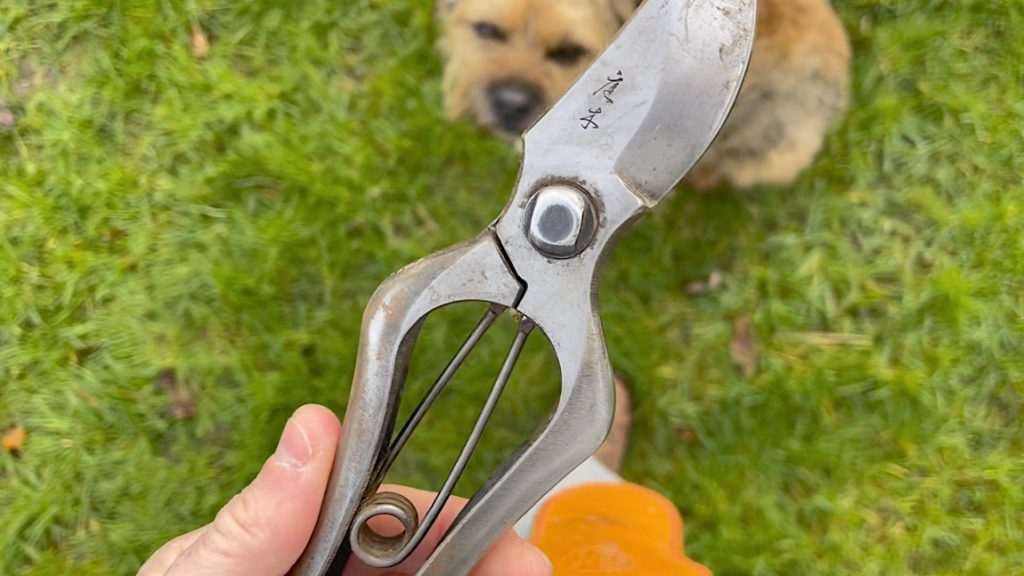
This page contains affiliate links for products I use and love. If you take action (i.e. subscribe, make a purchase) after clicking a link, I may earn some gardening commission which helps me keep the Garden Ninja Blog free for all.
Pears are super neat and relatively low-maintenance small garden trees. However, they can become congested quickly as their growth does have a habit of growing up vertically. This can lead to a canopy that is congested, meaning more chance of fruit spoiling or fungal air or rain-born infections taking over due to lack of airflow.
We also prune pear trees to help stop the tree from putting all its energy into sending out branches rather than fruit.
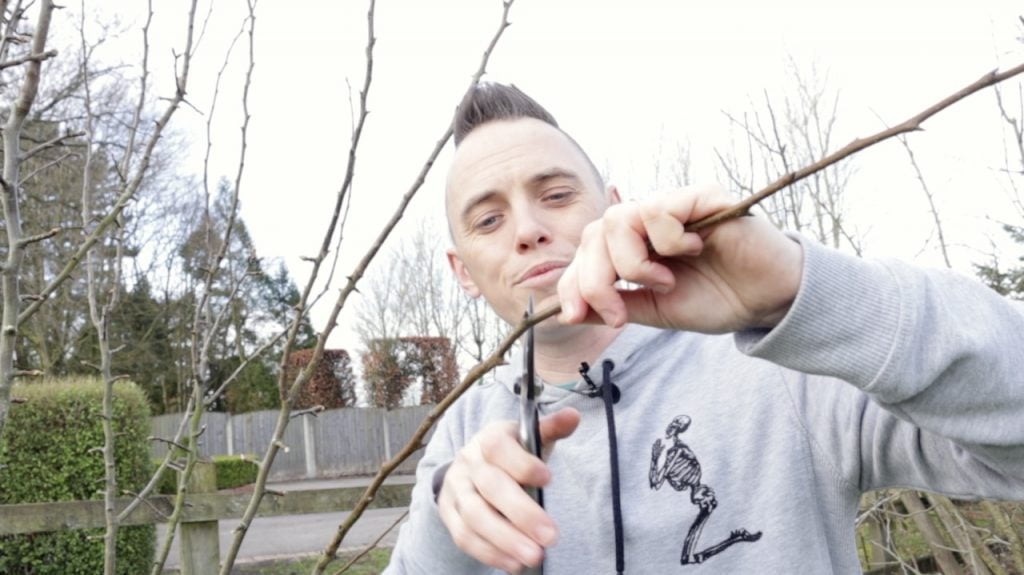
In the UK, the best time to prune a pear tree is late Winter, around January to March.
It's best to prune at this time of year to encourage a pear tree for productive fruiting as they are dormant. It means when spring comes, they will send their energy into the newly pruned areas causing the buds beneath the pruned regions to put on growth.
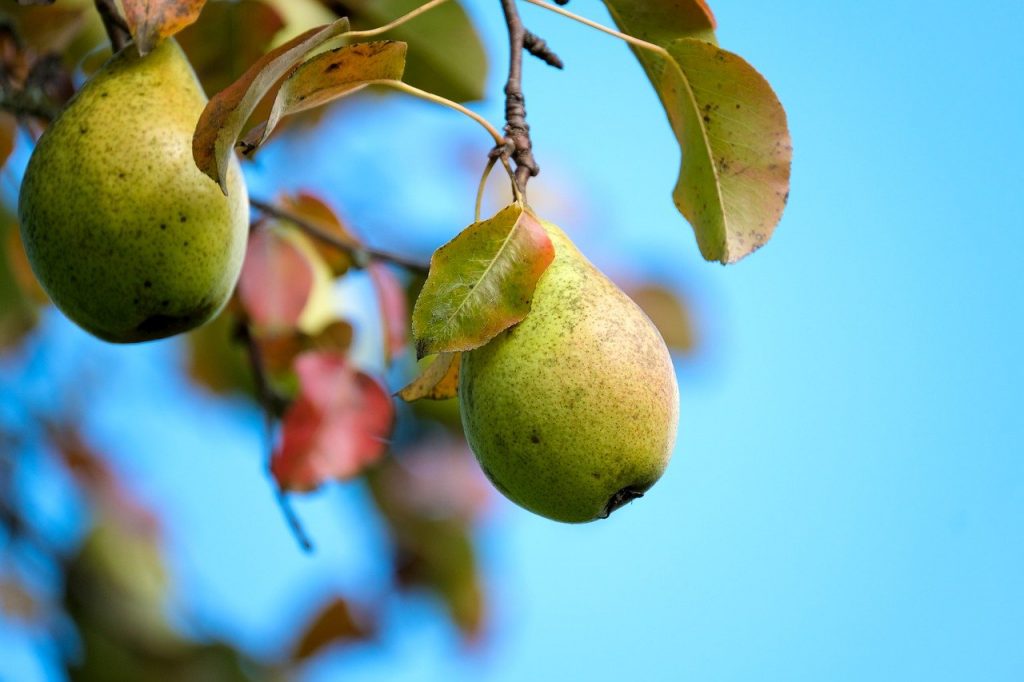
Winter pruning of pears encourages growth and fruiting in the next growing season.
If you want to maintenance prune a pear tree to take away certain branches or restrict its growth next year then the best time is just after fruiting in late summer or autumn.
To successfully prune a pear tree, you're going to need a few key pieces of equipment. As with any gardening tools it is best to keep them clean, rust-free and sharp when used for pruning.
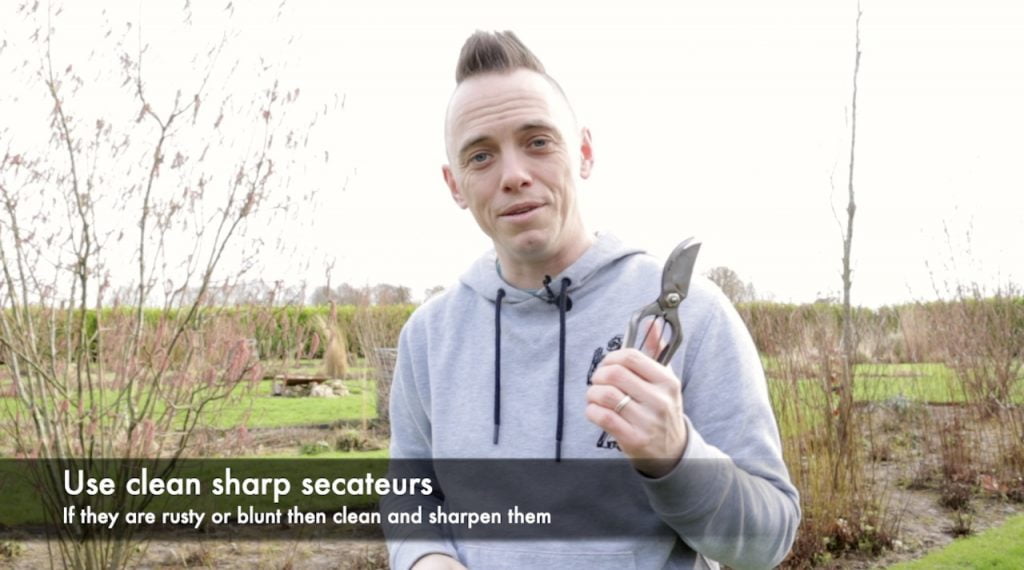
I use these Niwaki secateurs which are fantastic. I've used them for years, and can be kept razor sharp with a whetstone, Simply the best for expert pruning cuts. Once your equipment is ready, it's time to start pruning your pear tree. Come join me as I show you step-by-step how easy it is.
Did you know that you can take my course and learn how to become a Garden Ninja yourself? Click here for details
Pruning pear trees can feel daunting. After all, you're cutting off parts of your pear tree that you no doubt lovingly planted and have cared for. However, pruning really is vital to keep your pears in perfect shape so they can grow healthily.
By keeping your fruit trees open, uncongested and neat, you'll have less illness and more fruit with your tree.
With pear tree pruning, you want to cut in the right place and at the right angle. There are two ways to do this. Either cutting flush back to the main stem or branch when removing an entire lateral, as shown below.
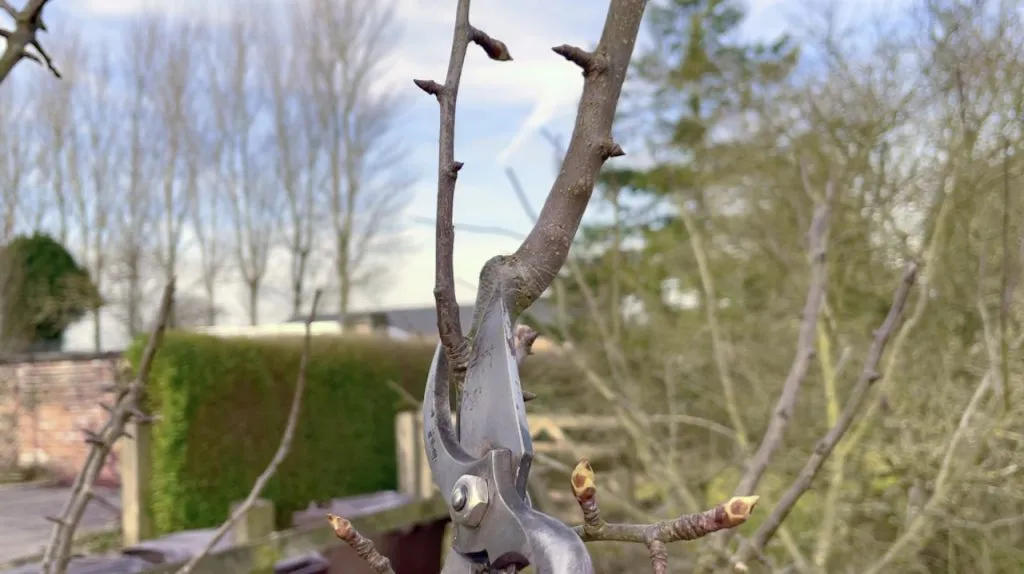
Alternatively, if shortening a lateral or stem cut just above a bud, at a 45-degree angle to an outward-facing bud. See below for the perfect pruning cut.
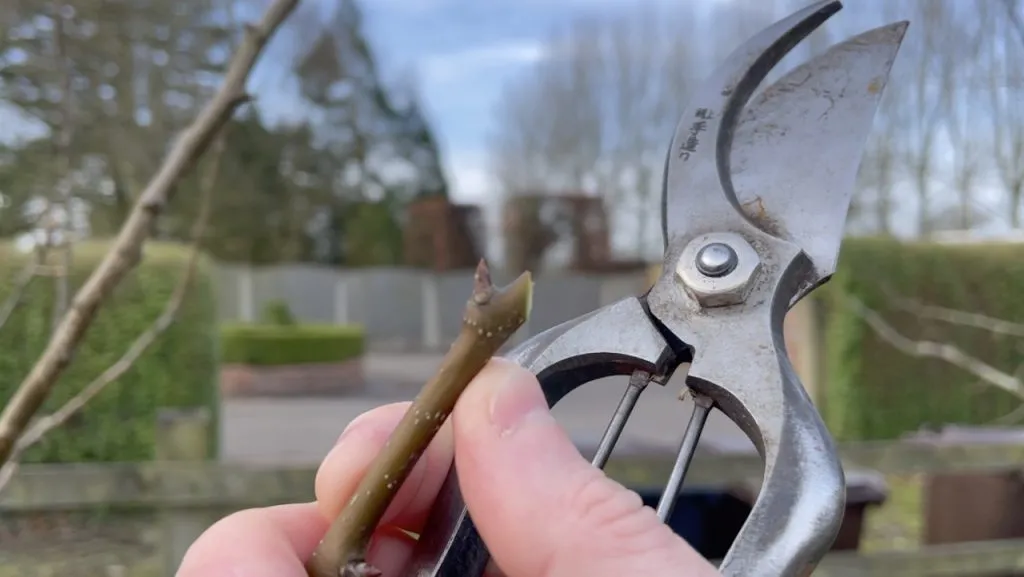
Now you know how to make these two cuts, it's time to start pruning.
The first thing to do when pruning a pear is to work your way around the tree removing any laterals or branches that have died, turned back or are damaged. I.e they have wounds from rubbing against other branches. The branch below has been torn in the wind, so needs to be removed.
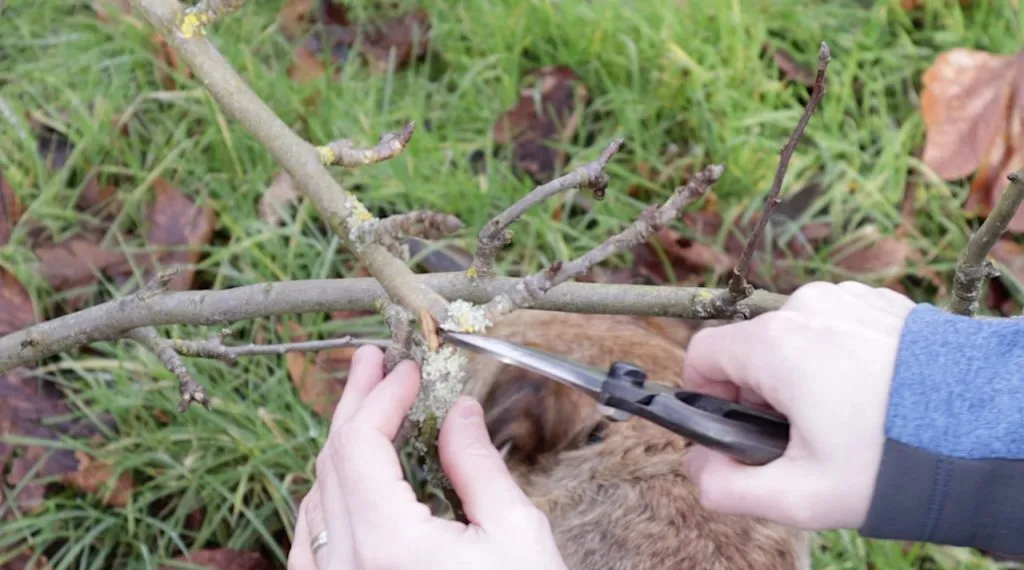
Take a step back and look for any crossing branches. Crossing branches can cause all sorts of trouble and damage to fruit trees. This is because in high winds and when the branches thicken, they can start to rub and chafe the main branch network. This can lead to wounds, abrasions and general injury to the tree, which weakens it and can allow for disease or illness to strike.
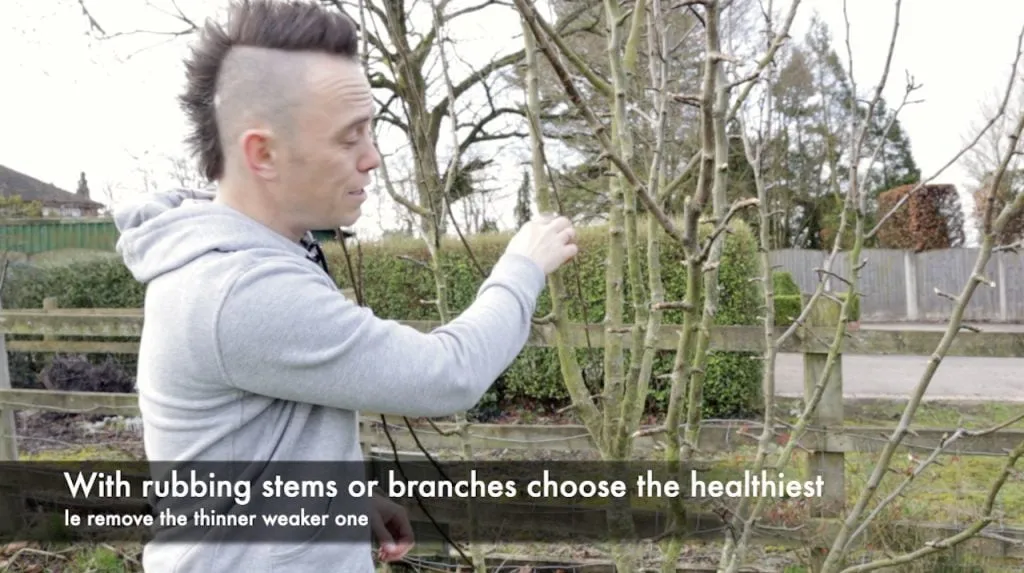
When you find two branches that cross or rub, it's time to pick the one to give the chop. Choose the healthier or more suitable branch to keep and cut the other one back. Usually, the healthier branch is either, the larger of the two or the branch that is in the best position when comparing the two.
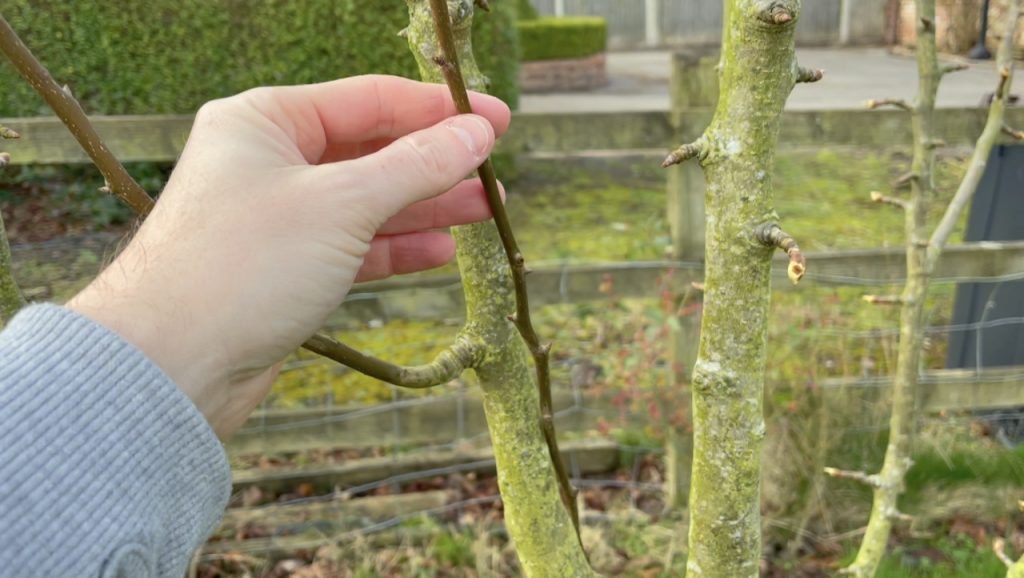
Usually, I cut the competing crossing stem back to the main branch. See the first cut example as you don't want this regrowing into the same direction again. As the chances are it will cross yet again so remove it.
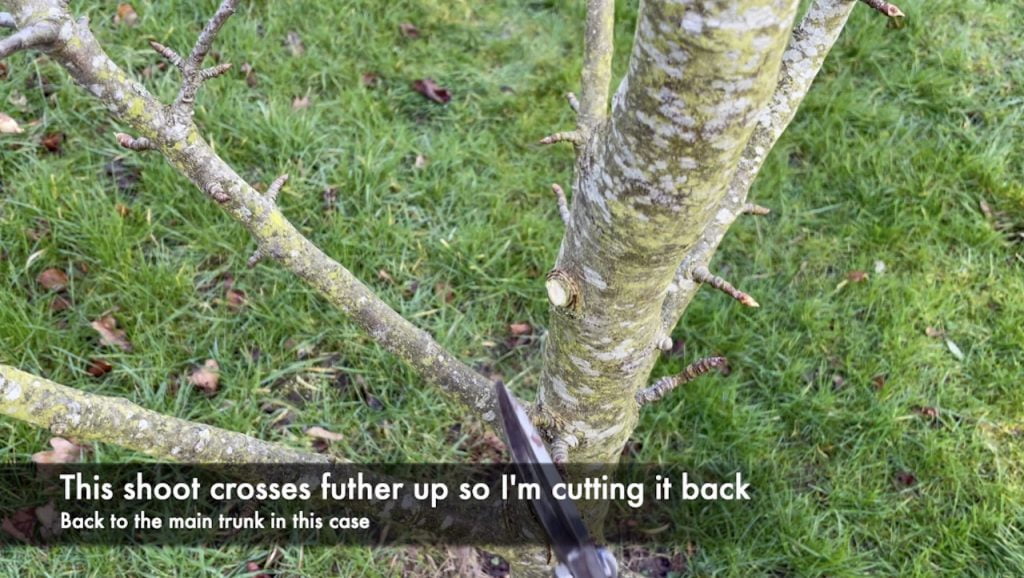
Now that we have removed all the offending damaged, diseased or crossing branches, it's time to shorten the overall branch structure of the pear tree. This helps focus energy on fruiting spurs rather than lots of long whippy leafy growth. If you're wondering how much to prune off your pear tree then the answer is up to 1/4 of the current growth.
If we don't prune these back by 1/4 then the tree can end up using all of its energy on long thin branches which if they do fruit can get damaged.
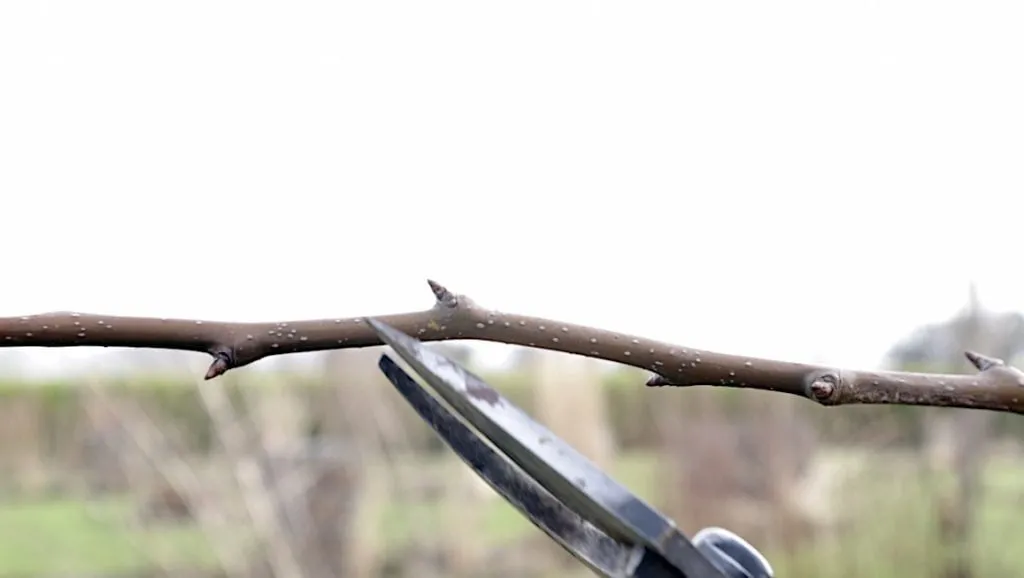
I locate an outward-facing bud and cut just above it at 45 degrees removing 1/4 of this lateral/branch
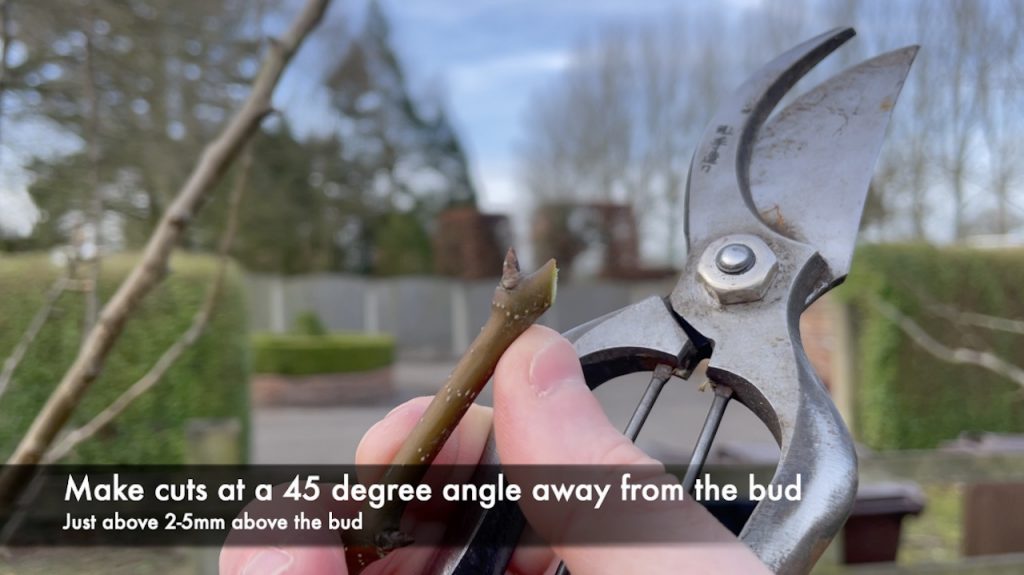
As pears are not as vigorous as apples we only take off 1/4, not 1/3 as you usually would with most fruit trees. Work your way around the tree cutting off each branch or lateral by 1/4.
The 'open goblet' pruning technique is a shape that is often described for healthy fruit trees. This means that we prune the 'standard shaped' fruit tree (one that isn't pruned into a special format like espalier or cordons) into an open goblet shape, so there's even spacing and enough airflow.
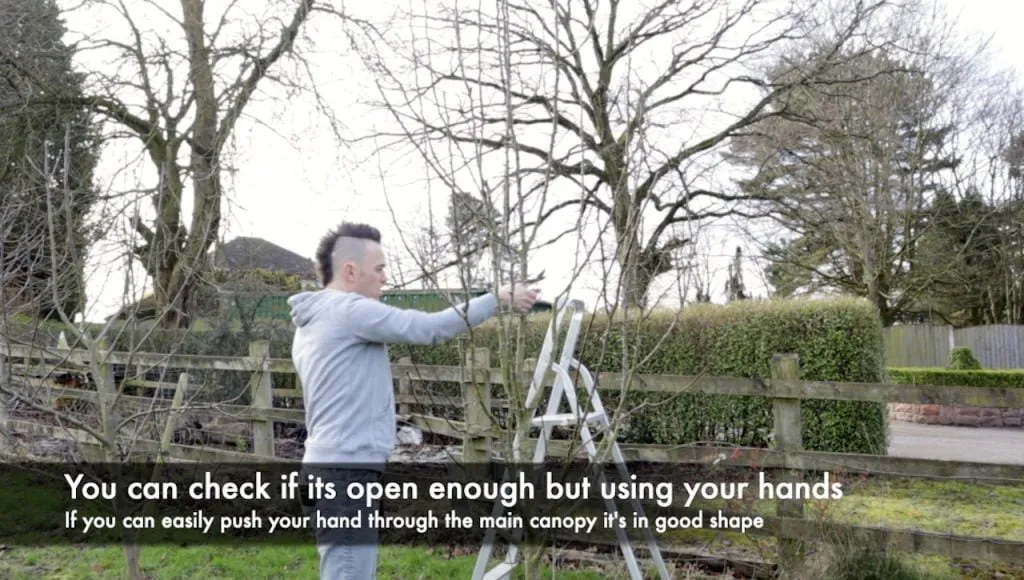
Think of this like an outstretched upturned palm of your hand with the fingers as branches. Each one is evenly spaced and has plenty of airflow and light available to it. You can also check how open your pear tree is by trying to push your hand through the centre of the canopy. If you keep hitting branches and shoots it probably needs thinning more.
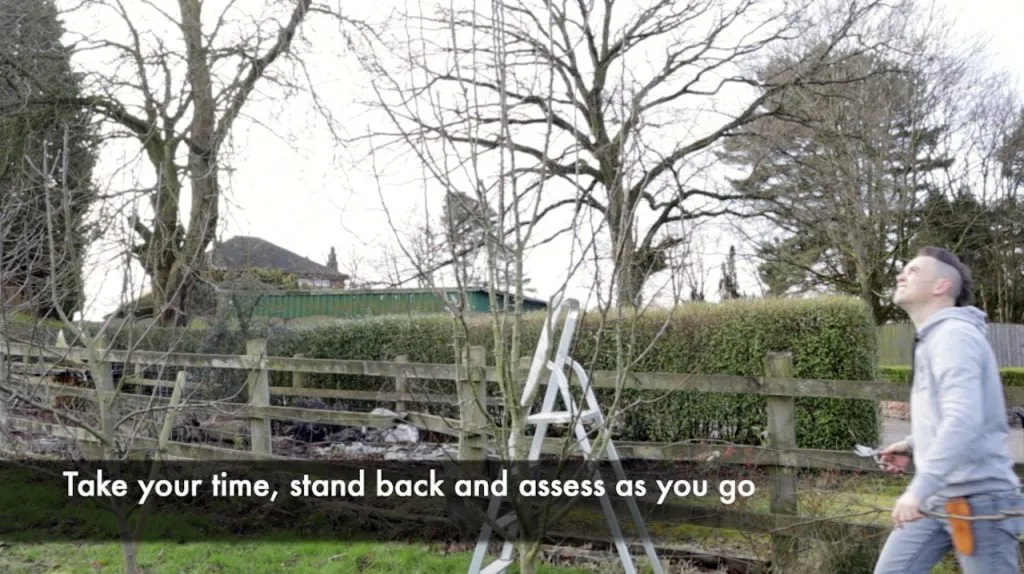
Work away around the tree standing back and taking note of what may need to be pruned out or reduced. Use a pair of sturdy step ladders to reach higher branches, never perch on a fence or overstretch!
Try not to rush or prune in stages, as this can break the flow of your shaping. Pruning, when done at a leisurely pace, is actually really enjoyable!
When you have finished working around the pear tree and are happy, you've evenly pruned, it's time to recycle those clippings.
The best use for them is to either dry them for fire kindling (they smell delicious), cut them down further and home compost them or use them in bug hotels. Helping to create zero waste when pruning!
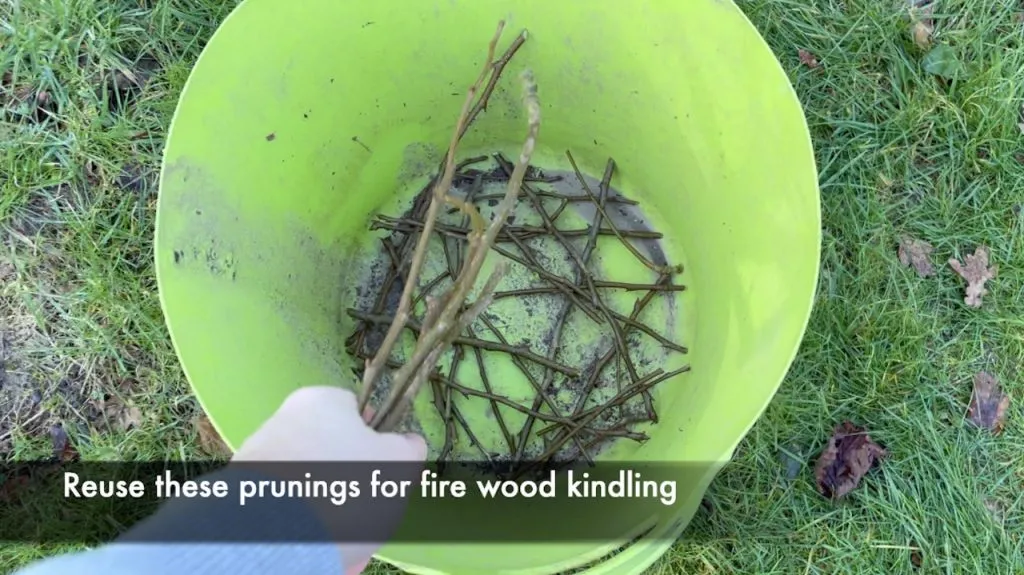
If you're new to pruning fruit trees it can be helpful to see the before and after of a pruned pear tree. We're aiming to cut back 1/4 of all growth to keep the tree neat and tidy. The two examples below show a pear tree before pruning and one after. You should be able to spot the differences to help when pruning your own pear trees.
You can see how vertical all the growth above the tree is. How it has some congestion and the occasional crossing branch. All tree growth is reaching for the stars, which means less energy for fruiting spurs and more chance of damage in high wind.
The changes may look subtle, but after a successful prune, the vertical growth has all been neatly trimmed back to outward-facing buds. Those congested or crossing stems have been removed. Resulting in a healthy open goblet-shaped pear tree!
One thing to consider, especially if a new gardener or gardening in a small space, is the pollination of pear trees. Most fruit trees require a 'partner' tree to help cross-pollinate their flowers in spring to then create the fruits come late summer.
Without delving too deeply there are different pollination windows throughout spring, so if you're choosing a species that requires cross-pollination, you need to ensure you or a neighbour has a compatible tree. This way, pollinating insects like bees can then help cross-pollinate your trees.
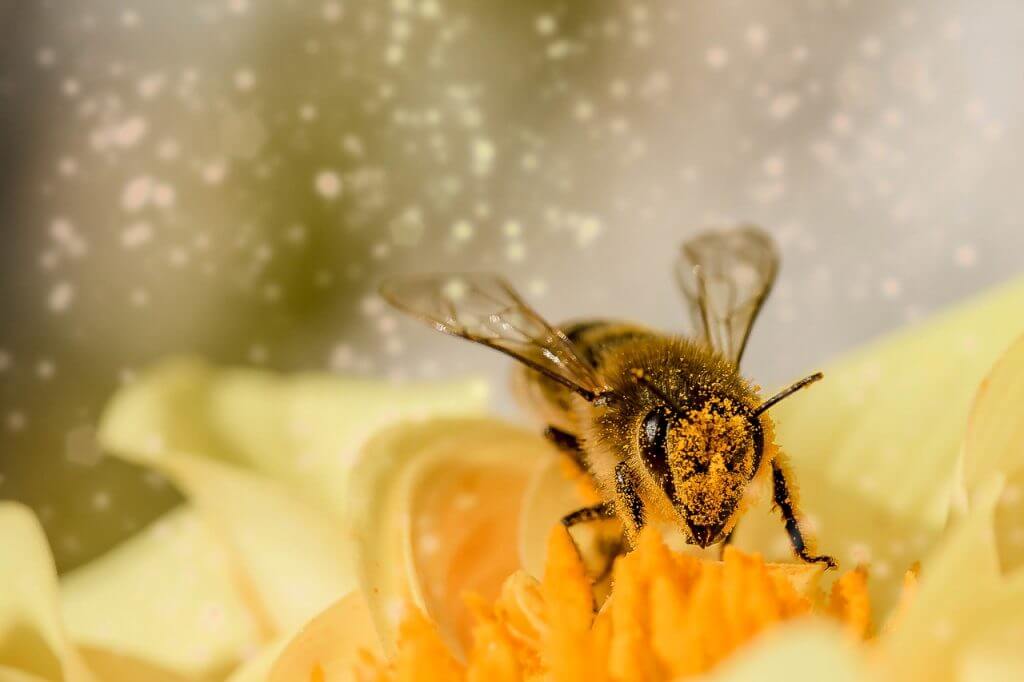
If this sounds like a right drama, then there's an easy solution: to choose a self fertile pear. These species don't require any pollination partner making them ideal for smaller gardens or where space is at a premium.
In all honesty though if there are a few trees in your neighbourhood the chances are the honey bees and insects will cross-pollinate them for you!
The list below are all self-fertile pear trees. Self-fertile pears are ideal for smaller gardens to help you get the very most out of your space! Pears are known by the Latin genus 'Pyrus' and then the species 'communis' followed by the cultivar, which is always in single quotation marks such as 'Conference'
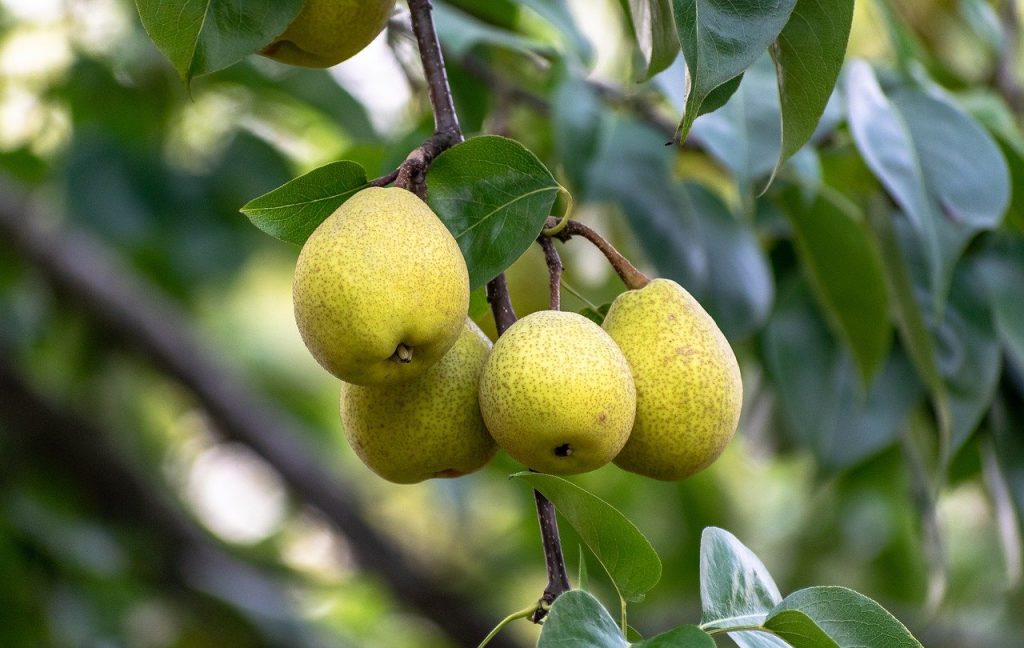
Pruning pear trees is relatively straightforward once you know what you're doing! Having the right tools that are sharp and clean is key alongside taking your time when pruning. Make sure you are standing back to check the overall shape and balance of the tree.
Try not to panic if you cut off too much or the wrong branch. Your fruit tree will soon grow back and each of these mistakes will make you a better gardener along the way!
Want to learn more about pruning then follow my other easy beginner gardening guides:

You can Tweet, Facebook or Instagram me. You can also follow me on Youtube where I’ve got plenty of garden guide vlogs.
Happy gardening!


You must be logged in to post a comment.


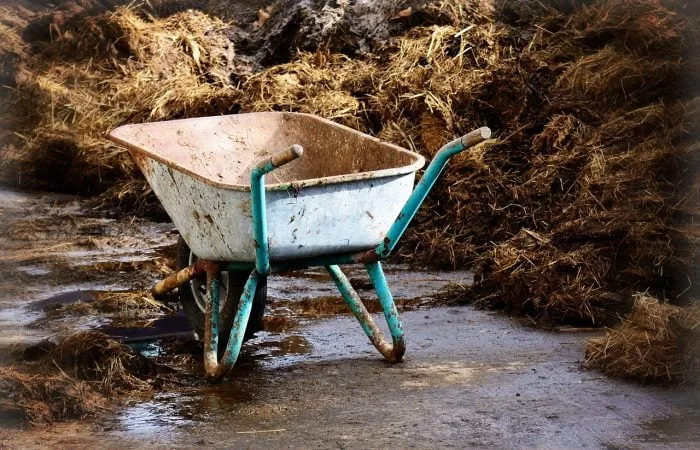
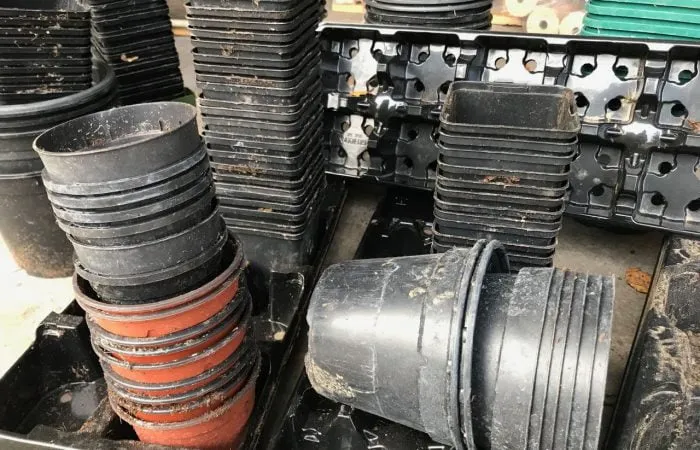


JOIN THE NINJAS

Be the first in line for new Guides, Discount codes and Offers
Hi, thanks for the fab pruning guide. Can I ask, how do I go about pruning a ‘middel’ age pear. It dosent need to be any higher.
Great tips! I really loved reading this blog! Very useful and eye-opening tips. Thanks for writing this down and sharing it! I am gonna write these tips down and use them when the time comes. Thanks!
Timing: Prune pear trees during late winter or early spring while they are still dormant, before new growth begins.
Great tips! I’ve always been intimidated by pruning, but your step-by-step guide makes it seem much more manageable. I can’t wait to try these techniques on my pear trees this spring. Thanks for sharing!